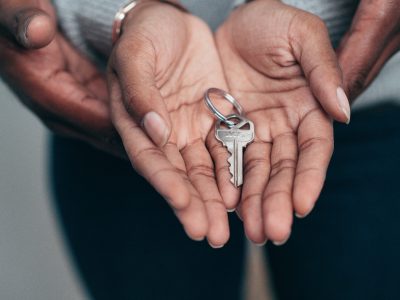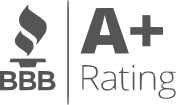Nonprofits searching for a permanent home for their organization face a major decision: should they continue renting, or is it time to purchase property through a nonprofit mortgage loan? While more financing options are available today than ever before, nonprofit real estate ownership isn’t always the right move. Getting a mortgage for a nonprofit can be complex and time-consuming. Understanding your options — including the differences between a mortgage, a fixed-term loan, and a nonprofit line of credit — can help you make the best financial decision for your organization.
Summary
What Are Nonprofit Mortgage Loans?
Nonprofit mortgage loans are specialized financing products designed for organizations with 501(c)(3) or similar nonprofit status. These loans allow nonprofits to purchase, build, or renovate properties such as community centers, shelters, and educational facilities.
Some programs are offered by other nonprofits or federal agencies that understand the unique challenges of nonprofit cash flow. Others are available through commercial banks or community lenders, though these often fall under the category of commercial mortgages, which operate very differently from residential home loans and are often difficult to obtain approval for.
Nonprofit Line of Credit vs. Nonprofit Mortgage: What’s the Difference?
Before diving into nonprofit mortgage options, it’s critical to understand how a nonprofit line of credit differs from a mortgage loan — and why many organizations use both tools at different stages of their growth.
A nonprofit mortgage is used to purchase or build property, with repayment terms often stretching 10 to 25 years. It requires collateral, down payments, and legal fees, and approval can take months. A line of credit, however, serves a very different purpose. It provides short-term working capital that nonprofits can draw on when cash flow is tight — for example, when waiting for grant reimbursements or donor pledges.
A fixed-term loan is another middle-ground option, often used to renovate property or cover specific large expenses, with repayment over 3–5 years.
Why a Line of Credit Can Be a Lifeline for Nonprofits
For many nonprofits, the most pressing financial challenge isn’t buying property — it’s managing cash flow volatility. Donations, grants, and contract payments rarely arrive on a predictable schedule, yet payroll, rent, and program costs must be paid on time.
That’s where a nonprofit line of credit from Financing Solutions stands out. Since 2012, Financing Solutions has been the largest provider of lines of credit to small nonprofits in the U.S., offering fast, flexible access to working capital. Unlike traditional bank loans, their line of credit requires no collateral or personal guarantees and costs nothing until used — making it an ideal safety net for nonprofits that want stability without taking on unnecessary debt.
While a mortgage might be a strategic investment for nonprofits seeking long-term ownership, a line of credit helps ensure day-to-day financial resilience — protecting operations and programs during funding gaps.
What Makes Nonprofit Mortgage Loans Unique?
Nonprofit mortgage loans differ from standard business loans in several ways. Here’s what sets them apart:
1. Flexible Terms for Irregular Income
Nonprofits often have income that fluctuates throughout the year, depending on grants, events, and donations. Mission-driven lenders understand this variability and may structure repayment terms that account for seasonal cash flow differences.
2. Lower Interest Rates
Community-focused lenders like Community Development Financial Institutions (CDFIs) sometimes offer lower rates to nonprofits. However, these loans can be difficult to qualify for, involve extensive paperwork, and take months for approval.
3. Higher Loan-to-Value Ratios
Nonprofits may be able to borrow a larger percentage of the property’s value, reducing upfront cash needs. Still, expect to provide detailed financial documentation, a down payment, and possibly audited financials.
4. Specialized Nonprofit Lenders
Institutions like the Nonprofit Finance Fund (NFF) or local community banks understand nonprofit balance sheets and may offer guidance, training, or grants alongside their loans. Be prepared, though — these programs often require patience and persistence.
5. Collateral and Guarantees
Many lenders require collateral, such as equity in the building, and may even ask board members to personally guarantee part of the loan. This can be a sticking point for organizations that wish to avoid personal liability.
Can a 501(c)(3) Buy Property?
Yes — nonprofits can own property, just like for-profit businesses. However, deciding whether to buy or lease depends on multiple factors: location, local real estate costs, mission alignment, and long-term financial sustainability. Remember that SBA loans are not available to nonprofits, as they are limited to for-profit entities.
Buying vs. Renting for Nonprofits
Advantages of Buying
Full control over the facility’s use and design
Freedom from landlord restrictions and rent increases
Long-term stability and community presence
Ability to build equity and potentially rent unused space
Possible exemption from state property taxes
Disadvantages of Buying
Large upfront costs and long-term debt
Maintenance and repair responsibilities
Less flexibility to relocate if your needs change
Advantages of Renting
Flexibility to move or expand
Lower initial costs
Landlord often handles maintenance and repairs
Disadvantages of Renting
Rent increases and potential lease termination
No property control or ability to build equity
Harder to secure improvement financing
What You Need to Qualify for a Nonprofit Mortgage
To secure a nonprofit mortgage, you’ll typically need:
501(c)(3) documentation
Strong financial statements showing consistent revenue and expense management
A proven mission track record demonstrating impact and stability
A sustainability plan outlining how you’ll manage both loan payments and ongoing operation
- Potentially a personal guarantee
Lenders want reassurance that the loan will strengthen, not strain, your mission.
How to Find a Nonprofit Mortgage Lender
Finding a lender that understands nonprofit operations is critical. Here are key strategies to help you locate and secure the right financing partner:
1. Start with Mission-Aligned Lenders
Seek out CDFIs, credit unions, and regional community banks that have experience working with nonprofits. These institutions often consider more than just credit scores, focusing instead on mission impact and management quality.
2. Explore National Nonprofit Lending Programs
Organizations like the Nonprofit Finance Fund (NFF), IFF, and Local Initiatives Support Corporation (LISC) specialize in lending to mission-based organizations. They often provide educational resources and technical assistance alongside financing.
3. Partner with Foundations and Donors
Some foundations offer low-interest loans or “program-related investments” to nonprofits that align with their philanthropic goals. Engaging major donors or board members to provide partial guarantees can also strengthen your application.
4. Understand the True Cost of Ownership
Beyond the mortgage payment, consider ongoing costs — insurance, utilities, property management, and capital improvements. These expenses can add up quickly and should be included in your long-term financial model.
5. Be Prepared for Due Diligence
Nonprofit mortgage applications can be rigorous. Lenders may request board minutes, strategic plans, audited financials, and evidence of long-term donor or grant commitments. Strong documentation can make the difference between approval and rejection.
6. Consider Blended Financing Solutions
Some nonprofits combine loans, grants, and capital campaigns to reduce total borrowing. This hybrid approach can help you avoid over-leveraging and maintain operational flexibility.
7. Donor-Backed Mortgages and Real Estate Gifts
In some cases, nonprofits secure property or mortgages directly through donor support. A generous donor or corporate sponsor may provide the mortgage funds at little or no interest, or even gift real estate outright to the organization. These gifts can have a transformative effect — giving nonprofits a permanent home base and freeing up operating dollars for mission-driven programs. However, such arrangements require due diligence. The property should be inspected for long-term sustainability, and legal agreements should clearly define ownership, tax implications, and maintenance responsibilities. For many organizations, cultivating donor relationships that lead to real estate gifts can be a long-term strategic goal that enhances both financial and community stability.
The Bottom Line: Making the Smart Financing Choice
For nonprofits, the decision between buying and Renting — or between a mortgage and a line of credit — comes down to your organization’s financial stability, mission needs, and growth plans.
A nonprofit mortgage may offer long-term stability and equity, but it comes with commitment, complexity, and risk. A nonprofit line of credit, on the other hand, ensures agility and protection against funding gaps — a key advantage for organizations that rely on unpredictable revenue streams.
As the largest provider of nonprofit lines of credit in the U.S. since 2012, Financing Solutions continues to help mission-driven organizations maintain stability, fund critical programs, and keep operations running smoothly, even when funding is delayed.




